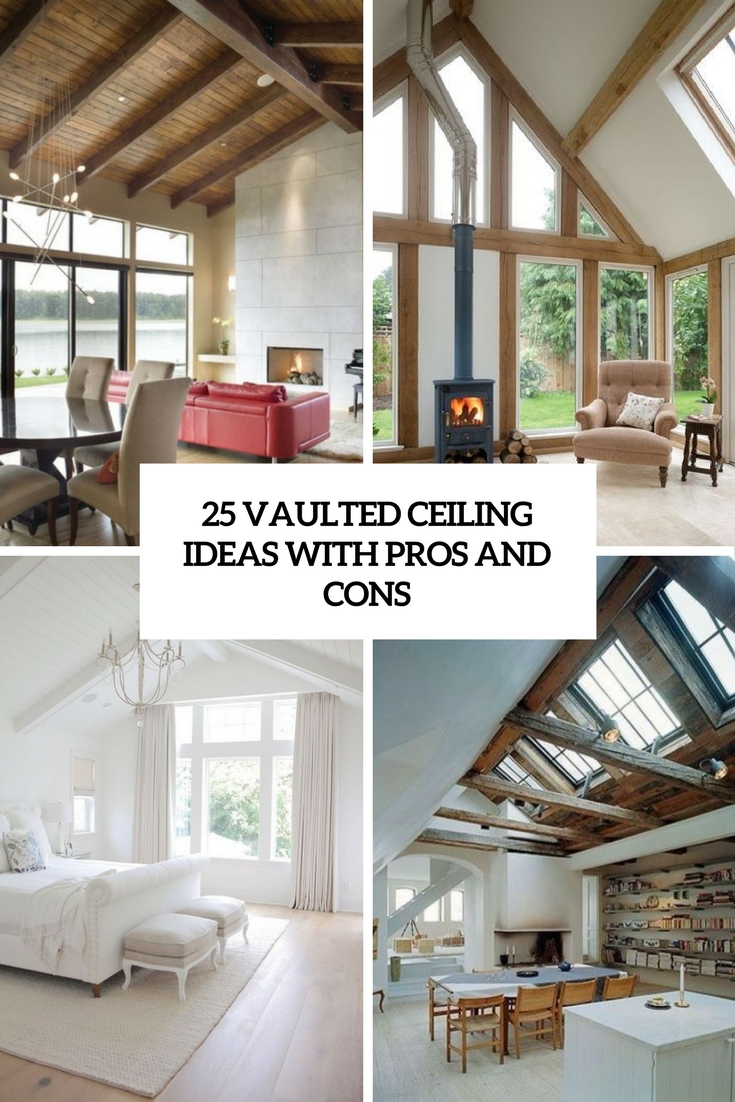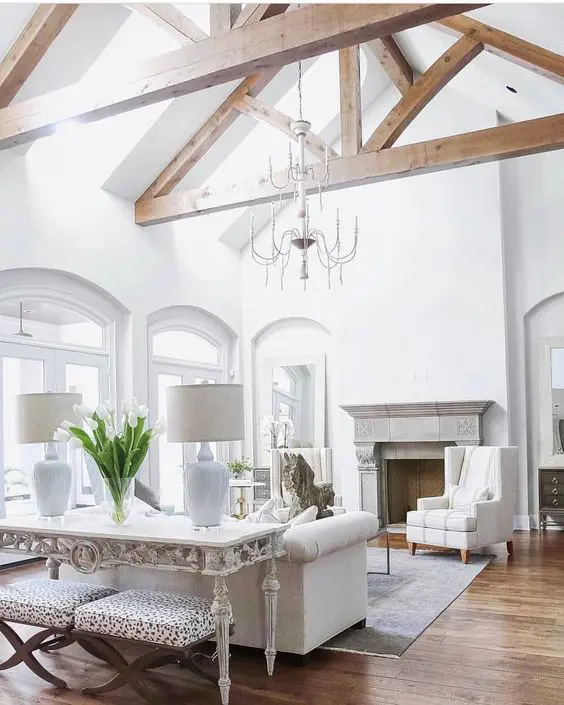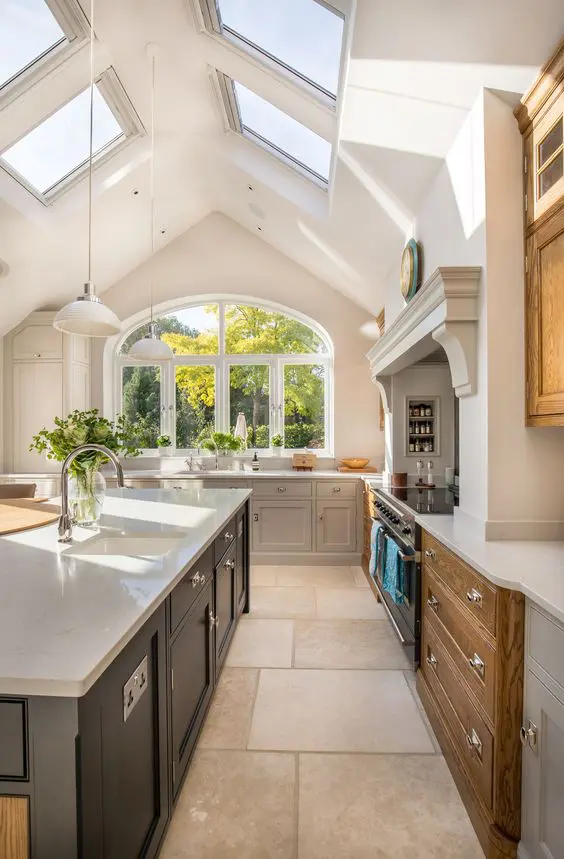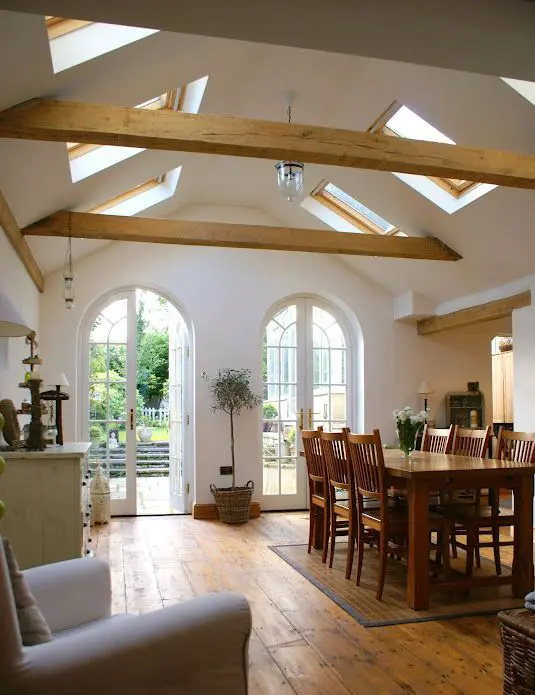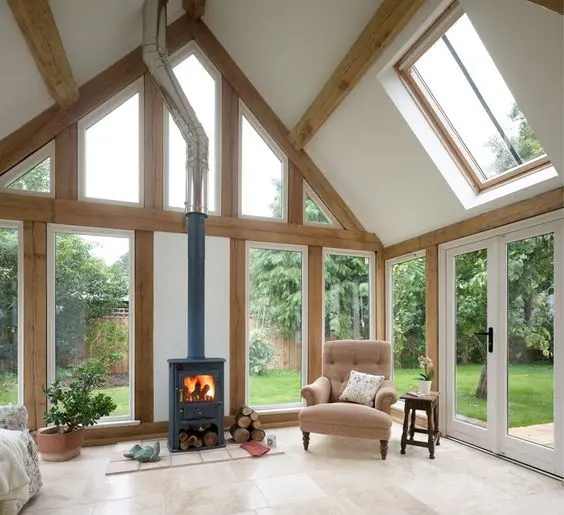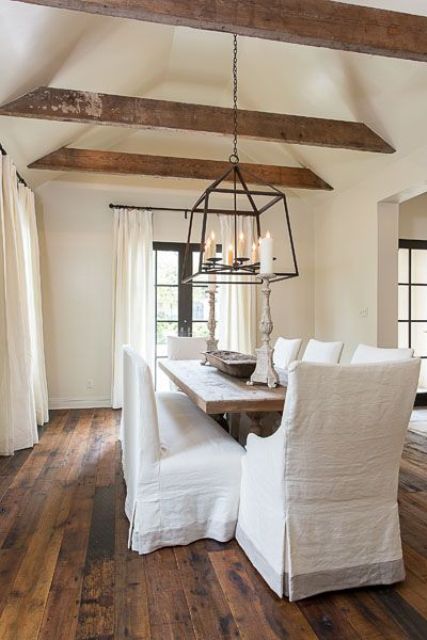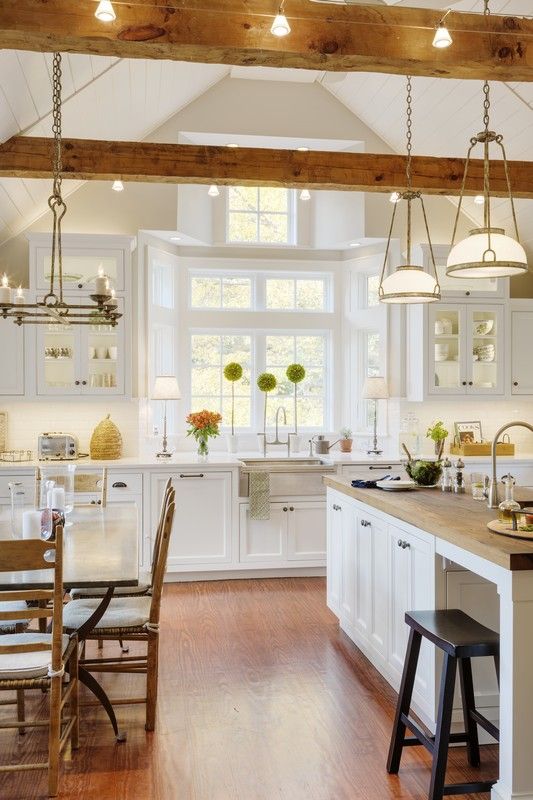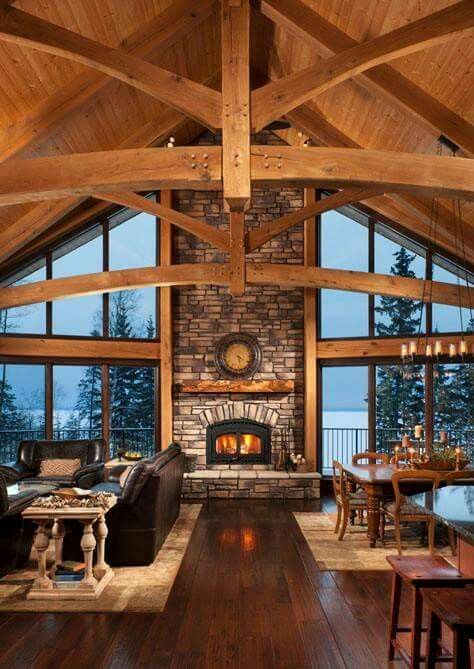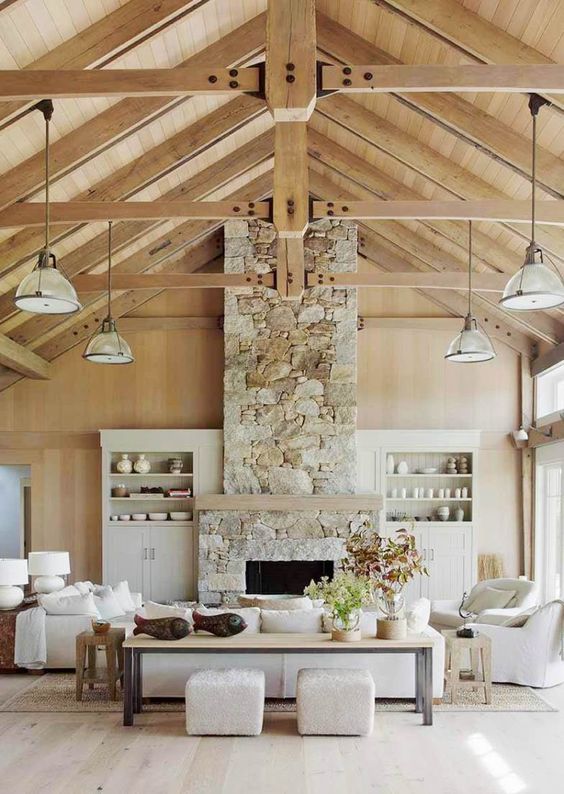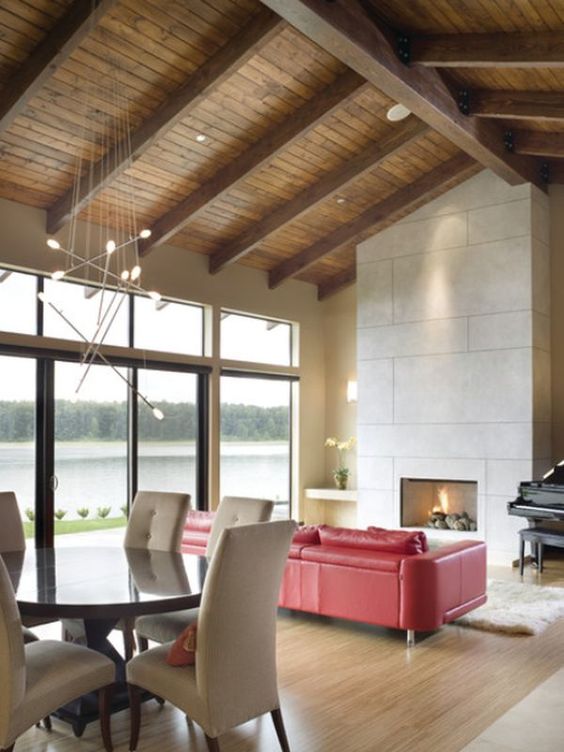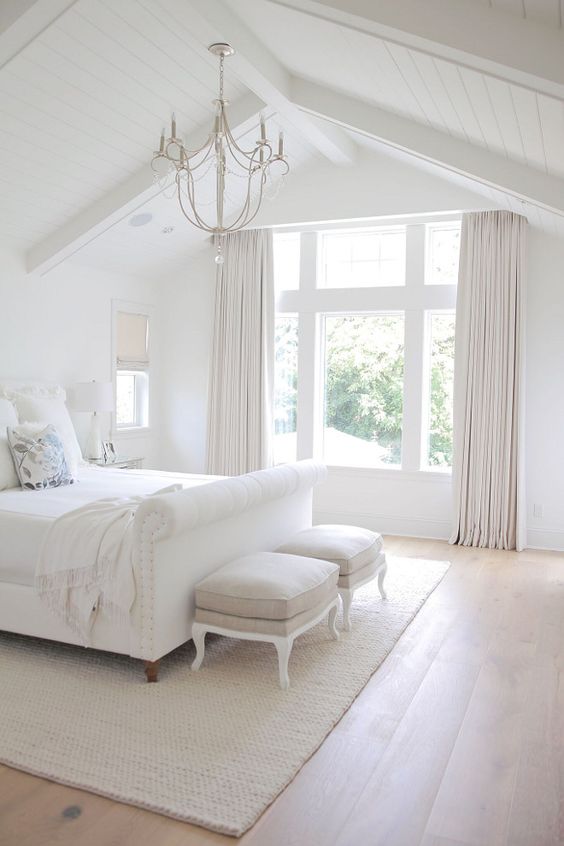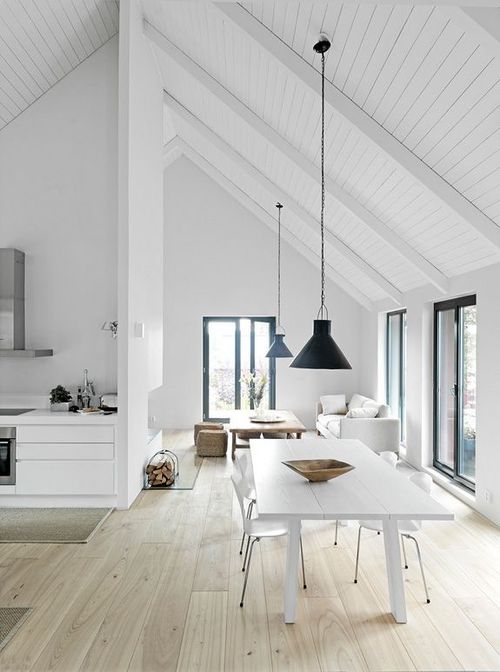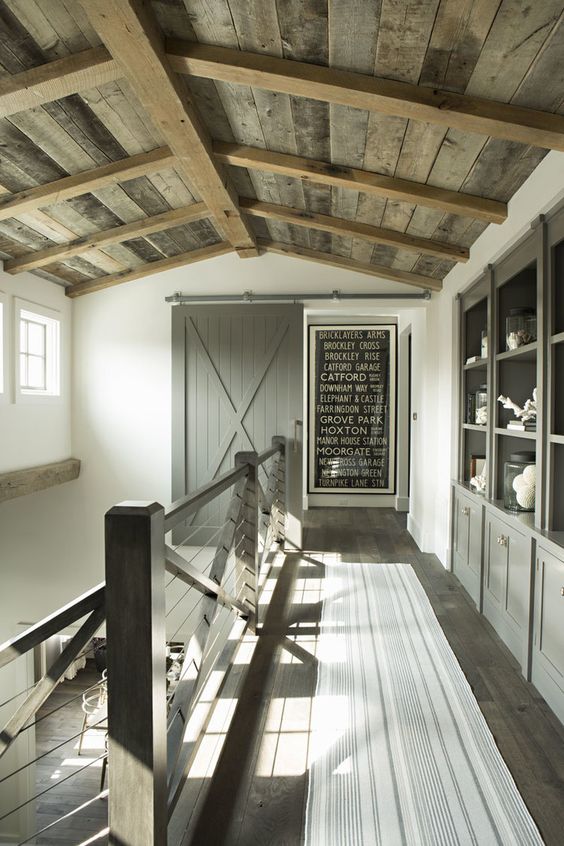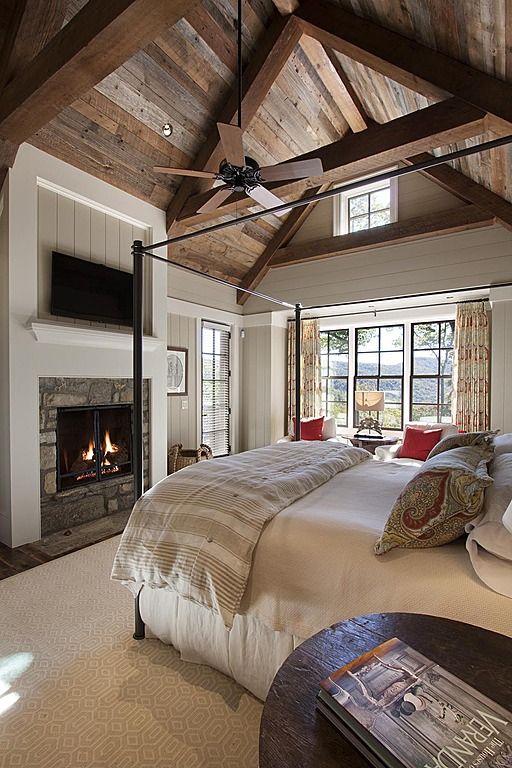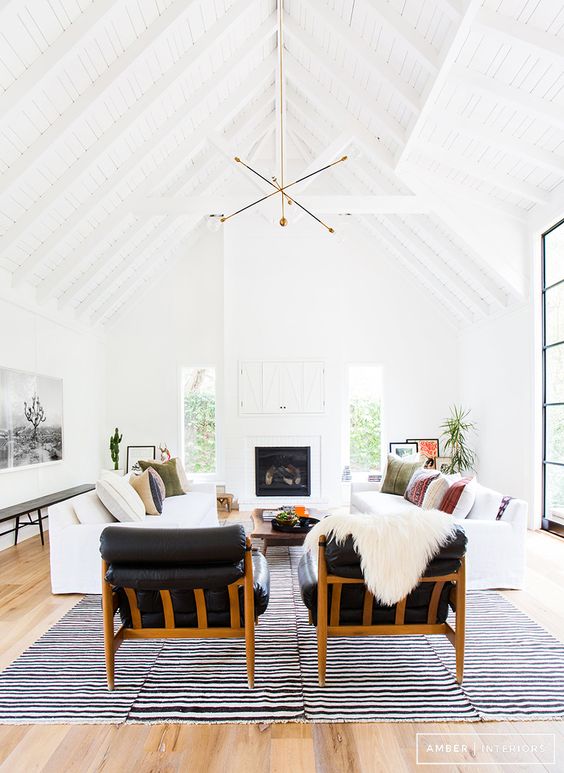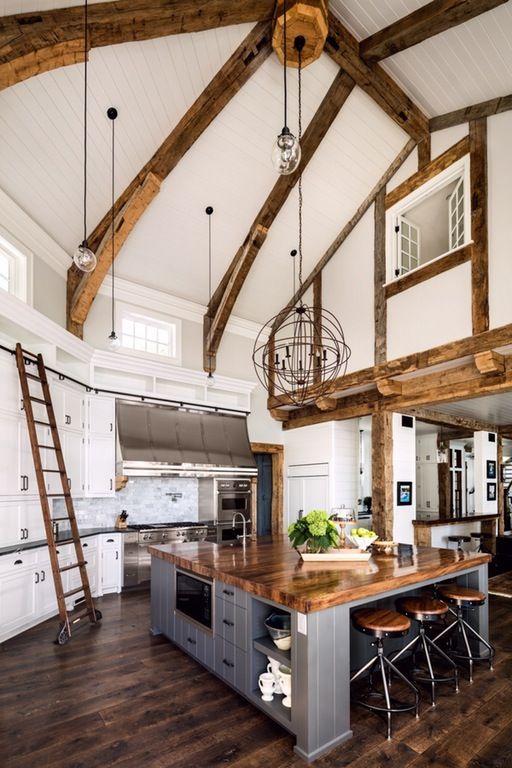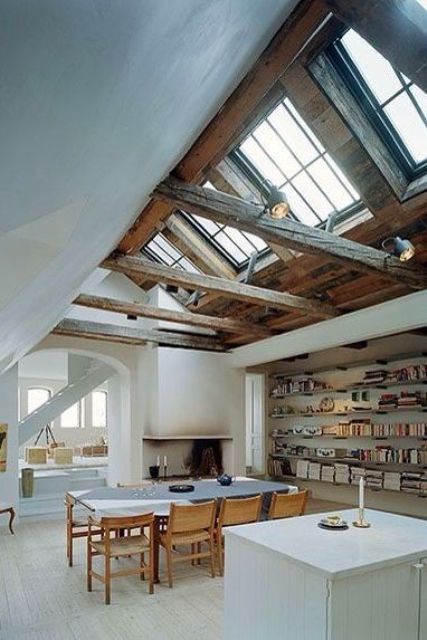A vault is an arched form extruded into the third dimension used to provide a space with a ceiling or roof. Vaulted ceilings were first used in cathedrals or basilicas centuries ago but later architects began to use them in various castles and in usual homes. Today you can also find various buildings with such ceilings, and if you are hesitating whether you need it or not, here are some pros and cons with examples.
Pros Of Vaulted Ceilings
A vaulted ceiling is usually accompanied with windows or skylights, which flood your space with natural light, which is a great advantage. Consider double glazing the surrounding glass to decrease energy requirements for heating/cooling.
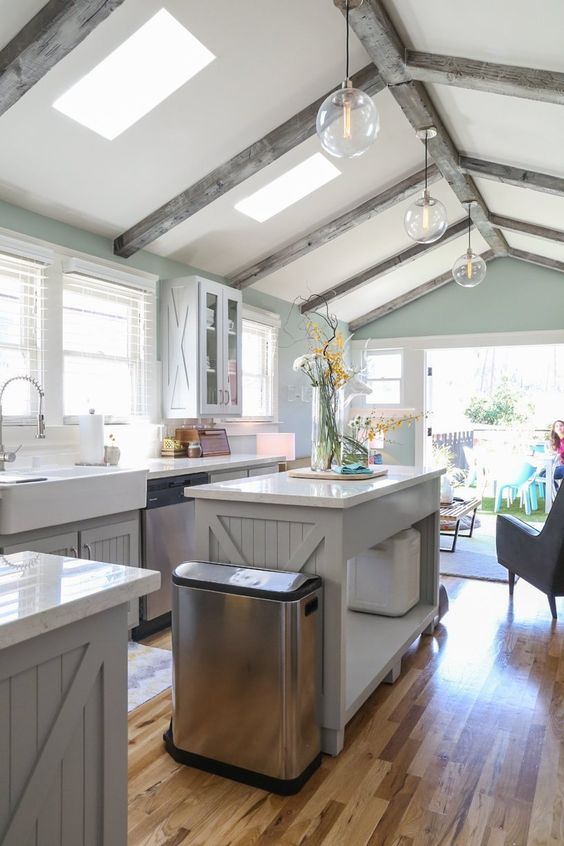
A vaulted ceiling with skylights and wooden beams for a rustic feel and enough light.
Exposed beams are a trendy decor feature that adds character to the space. A vaulted ceiling is a great idea to add some even if originally there were no beams. They will add coziness and a rustic feel, and of course a character – even a simple space will be highlighted. Vaulted ceilings with beams add oomph to the room’s design and appeal.
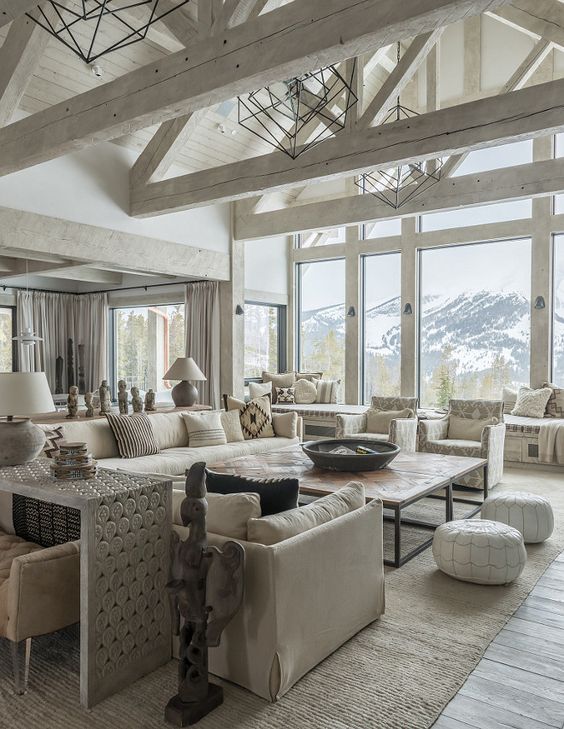
A neutral open space with a high vaulted ceiling with whitewashed beams.
Even if you don’t opt for wooden beams, a vaulted ceiling has a high potential for rustic appeal. Vaulted ceilings covered in wood planks provide a space with rustic charm. Due to their positioning (up high), the ceiling is one of the first things an eye notices. A perfect option for a modern rustic space!

A dark colored wooden ceiling makes a statement in this light-colored bathroom.
When designed strategically, vaulted ceilings can provide a much-needed venting area for unwanted hot air. This is particularly beneficial in a bathroom, where drying out as quickly as possible to prevent mold growth is a must.
Cons Of Vaulted Ceilings
A vaulted ceiling means having a lot of dead space where nothing ever goes in and nothing ever comes out. A vaulted ceiling always makes a space look bigger and more expansive, and it means that there will be no intimate feeling. If you need maximal coziness, such a ceiling isn’t the best idea.
Dusting a ceiling fan or changing a lightbulb can require professionals because of the immense height. To solve this problem, you can at least hang lamps and chandelier lower to make changing bulbs easier.

To make the space cozier despite of a high ceiling, you can use wooden beams of some saturated shade.
On cold days the larger spaces created by vaulted ceilings require more energy to heat, and on the contrary – on hot days you’ll need more energy to cool down the space. This is a waste as no one uses that that air up but still you need to do that.
